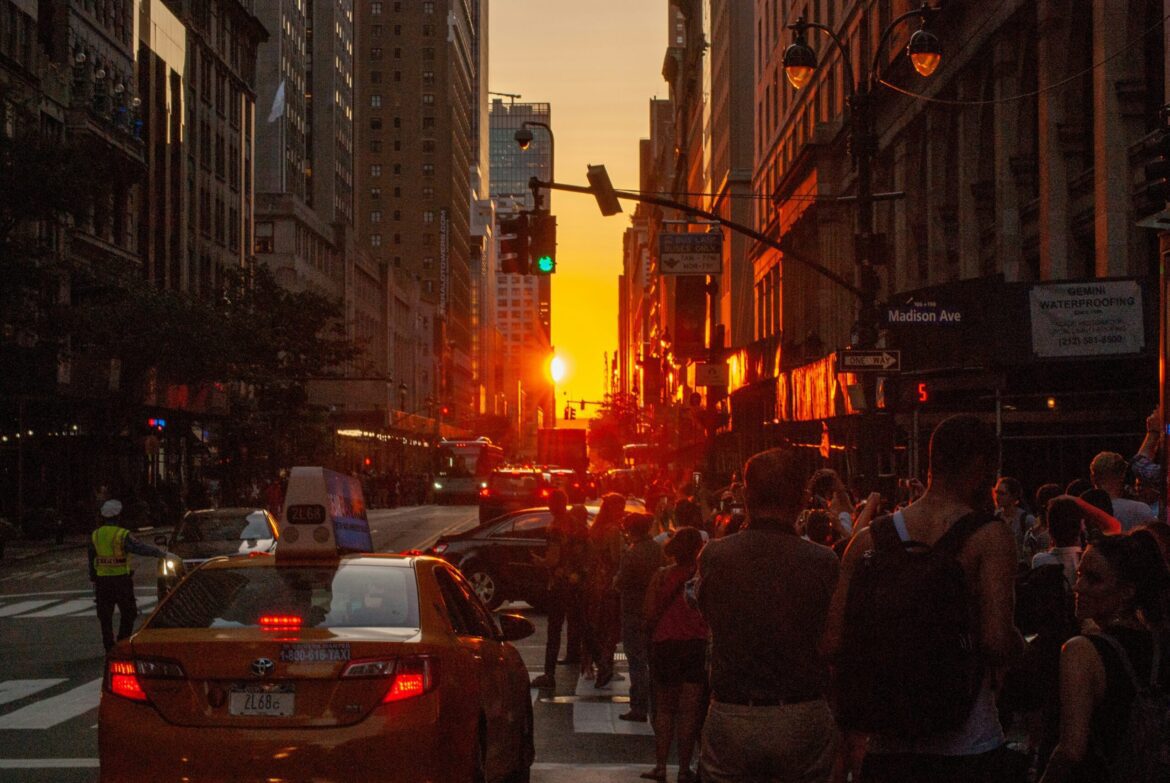New York City tackles extreme heat with comprehensive new initiative
In August 2023, New York City launched an ambitious and wide-ranging initiative to combat the growing challenge of heatwaves, exacerbated by climate change. The “Heat Action Plan” is a bold effort to safeguard the city’s most vulnerable communities and enhance the city’s overall resilience to extreme summer temperatures. With high temperatures becoming a more frequent and dangerous occurrence, the plan seeks to cool the city and reduce the impacts of urban heat islands.
The plan, spearheaded by the city’s Department of Environmental Protection (DEP) and supported by the Mayor’s Office, includes measures to significantly increase the number of cooling centers, create new green spaces, and promote reflective roofs in buildings across the five boroughs. With climate change pushing temperatures to new highs, experts believe that these actions are crucial in protecting public health and ensuring that New York remains a livable, sustainable metropolis.
What the Heat Action Plan Includes
One of the key components of the Heat Action Plan is the creation of new cooling centers. These centers will be spread throughout the five boroughs, providing air-conditioned spaces for residents who may not have access to cool indoor environments. The initiative is particularly focused on lower-income communities, where many residents live in older buildings without air conditioning and are disproportionately affected by extreme heat events.
- Cooling Centers: Thousands of additional cooling centers are being set up across New York City. These centers will offer a refuge from the heat for individuals and families who lack air conditioning at home, especially during the hottest summer months.
- Green Spaces: Green spaces play a pivotal role in cooling urban environments. The Heat Action Plan calls for the development of new parks, green roofs, and expanded tree canopy areas across the city. These green areas will help absorb heat and provide shade, reducing the overall temperature in densely populated areas.
- Reflective Roofs: A key feature of the plan is the promotion of reflective roofs, particularly in high-rise buildings. These roofs are designed to reflect sunlight rather than absorb it, which can significantly lower the temperature of buildings and the surrounding environment. Reflective roofing is particularly important in reducing the effects of “urban heat islands,” which occur when cities experience significantly higher temperatures than surrounding rural areas due to the concentration of buildings, concrete, and asphalt.
Why This Plan Is Needed
As global temperatures continue to rise due to climate change, heatwaves in cities like New York are expected to become more frequent and intense. In 2023, the city recorded one of its hottest summers in history, with heat indexes regularly reaching over 100°F.
Heatwaves are not just an inconvenience—they are a serious public health risk. Vulnerable populations, such as the elderly, young children, low-income families, and those with pre-existing health conditions, are most at risk of heat-related illnesses like heatstroke and dehydration. The city’s Heat Action Plan seeks to address this issue by providing immediate access to cooling resources and long-term solutions that will help protect these at-risk groups.
“We are facing an unprecedented increase in extreme heat events, and our Heat Action Plan is designed to tackle this challenge head-on,” said New York City Mayor Eric Adams at the plan’s launch. “By increasing access to cooling centers, expanding green spaces, and making our buildings more heat-resilient, we’re taking concrete steps to protect New Yorkers from the dangerous effects of climate change.”
The Plan’s Environmental and Economic Impacts
The Heat Action Plan not only aims to reduce health risks but also has substantial environmental benefits. Green spaces, such as parks and trees, will help absorb carbon emissions, support local biodiversity, and improve air quality. In addition, reflective roofing and other urban heat island mitigation strategies are part of a broader citywide effort to reduce the urban carbon footprint and make New York more sustainable in the face of rising temperatures.
The plan’s focus on energy efficiency and sustainability also has the potential for significant economic impact. Reflective roofs, for example, can lower energy costs for building owners and tenants by reducing the need for air conditioning during peak summer months. With New York’s energy grid under strain during hot weather, energy efficiency measures such as these are crucial for reducing overall demand.
Challenges and Future Steps
While the Heat Action Plan represents a significant step forward, experts acknowledge that there are still challenges ahead. The scale of the initiative requires collaboration between government agencies, private developers, and community groups. The city’s ability to secure funding for green spaces and infrastructure improvements, particularly in underserved areas, will be key to the success of the plan.
Additionally, as the frequency of heatwaves increases, there is a growing concern about the ongoing maintenance and expansion of cooling centers and green infrastructure. The city will need to ensure that these facilities are accessible, well-maintained, and effective in serving the residents who rely on them the most.
“We need to look at this plan as a living document,” said environmental expert Dr. Leah Zimmerman. “As climate change progresses, we must be flexible and responsive, updating our strategies to meet new challenges and ensure the well-being of all New Yorkers.”
What’s Next for the Heat Action Plan?
Looking ahead, the Heat Action Plan’s success will depend on the city’s ability to expand cooling resources, develop new green spaces, and continue engaging communities in the ongoing fight against climate change. Additionally, public awareness campaigns will play a crucial role in ensuring that residents know about the resources available to them during heat events.
The city has also begun pilot programs to track the effectiveness of these measures, including monitoring temperature reductions in areas with newly installed green roofs and cooling centers. The feedback gathered from these programs will inform future expansions of the plan.
Conclusion
As the climate crisis continues to intensify, New York City’s Heat Action Plan serves as a critical blueprint for urban areas worldwide facing similar challenges. By addressing the immediate risks of extreme heat through innovative infrastructure and green space expansion, the city is not only protecting its residents today but also building a more resilient and sustainable urban future.
For New Yorkers, the Heat Action Plan represents hope and proactive action in the face of rising temperatures, making the city a safer and cooler place to live.


